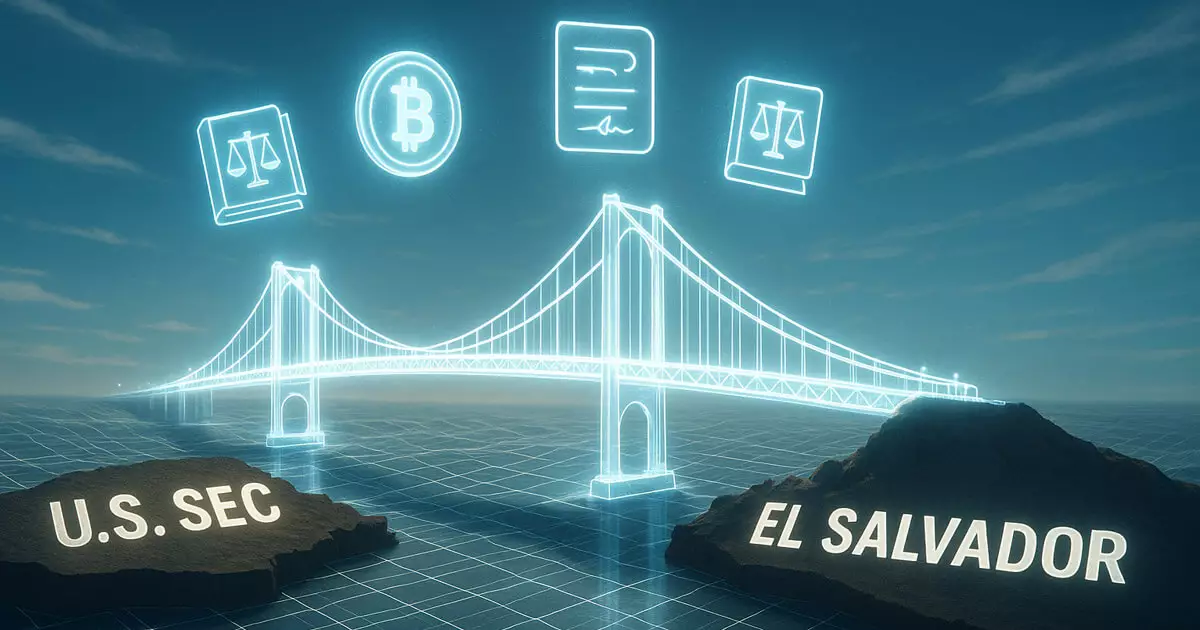In a progressive yet somewhat controversial stance, the US Securities and Exchange Commission (SEC) is engaging in dialogues with El Salvador’s National Commission of Digital Assets (CNAD) to pioneer a cross-border regulatory framework for digital assets. This initiative marks a significant pivot in the SEC’s traditional approach, as it seeks to innovate while navigating the complexity of global cryptocurrency markets. While some may applaud this initiative as a forward-thinking measure, it’s crucial to recognize the potential pitfalls and contradictions that lie within such a bold endeavor.
A Regulatory Sandbox: Testing the Waters or Just Playing in the Mud?
The SEC’s proposal to create a regulatory sandbox aimed at testing various tokenization models raises eyebrows. This sandbox, intended to emulate real-world conditions for assets ranging from debt instruments to fractional ownership of properties, could provide pertinent insights into market operations. However, one must question whether a sandbox can truly replicate the unpredictable and often chaotic nature of the cryptocurrency market. Can a controlled environment yield authentic results, or will it merely provide a facade of understanding while glossing over deeper systemic risks?
Initiating two pilot programs to gather data sounds commendable on the surface. It suggests a willingness to engage with the market rather than restrict it. Yet, the estimated cost of $10,000 to participate in the pilots raises concerns about accessibility. Are we merely creating another barrier for smaller businesses, or even individuals, who wish to enter this evolving market? If the goal is to encourage diversity and foster innovation, why not remove financial hurdles altogether?
Real Estate Tokenization: A Double-Edged Sword
The focus on real estate tokenization, particularly in conjunction with a Salvadoran company, spotlights how the SEC is banking on international collaboration. But does this make sense in a sector rife with complexities? Tokenizing real estate can democratize access to investment opportunities, yet it also introduces issues of valuation, regulatory compliance, and cybersecurity concerns. The SEC’s involvement may help legitimize such models, but the potential for market distortions ultimately raises the question: Are we opening the floodgates to a new type of financial speculation?
Moreover, the notion of token-based fundraising for small businesses, albeit enlightened, also brings to light the varying degrees of investor sophistication and protections. What regulatory safeguards are being put in place to ensure that these businesses don’t exploit this new avenue? The success of such initiatives will depend heavily on the SEC’s ability to navigate these treacherous waters without compromising investor protection.
The Trump Administration’s Impact on Crypto Policy
Interestingly, the SEC’s renewed crypto-friendly stance is linked to the political climate following the Trump administration’s reelection. This political backdrop suggests that regulatory approaches might sway with current leadership agendas rather than foundational principles. While it’s heartening to see policies that promote innovation, we must be wary of regulatory whims that could change direction based on the shifting political tides. Evaluating the regulatory landscape based on today’s needs rather than tomorrow’s uncertainties is a precarious approach that could lead to instability in the digital asset market.
Conclusively, the SEC’s exploratory efforts to enhance the oversight of digital assets through cross-border regulation and pilot programs present an exciting yet complex challenge. While such initiatives could provide valuable insights and foster innovation, they require thorough scrutiny to avoid creating systemic issues that could undermine the original intent of fostering a vibrant, diverse, and secure digital marketplace. The road ahead is fraught with opportunities but equally littered with potential missteps.
















Leave a Reply